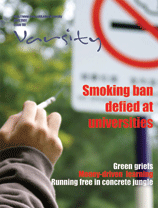


Periscope
Imported plants for greening - to cure or to kill?
She said Wedelia differed from Mikania in nature because Wedelia seeds were not wind-borne and the plant did not creep along other vegetation.
The government planted about two million seedlings of Wedelia, or formally known as Sphagneticola trilobata, in different areas of Hong Kong between 2003 and 2005, for slope restoration and afforestation.
In 2005, the government planned to plant some two million alien species, including Wedelia, to rehabilitate a part of Lai Pik Shan at northeastern Lantau destroyed by hill fires. But after Mr Chan and some green groups protested, the government added 238,400 native species in the project.
Mr Chan worried the planting of alien species could turn the hillsides into a "green desert" , with a green sight looking from afar formed by the alien plants but low biodiversity because of lack of animals.
"Although the landscape is green, few types of trees and no wildlife live there," the lawmaker said. Echoing Mr Chan, Roy Tam Hoi-pong, president of Green Sense, said local wildlife was not used to live on exotic plants, and the imported species that were planted at uniform intervals did not make good shelters for animals to hide or live.
The government should not depend on a large proportion of imported species for greening, the activist said.
"Nurturing of native species is a time-consuming task, but we cannot be too eager for results. Be patient and let them grow," Mr Tam said.
But Chau Kwai-cheong, a geography and resource
management expert, said imported species were not necessarily
bad, as some could withstand adverse environments and
conserve water. Those plants can also help improve the soil
condition and rehabilitate the land for native species to grow
and flourish, Dr Chau said.
